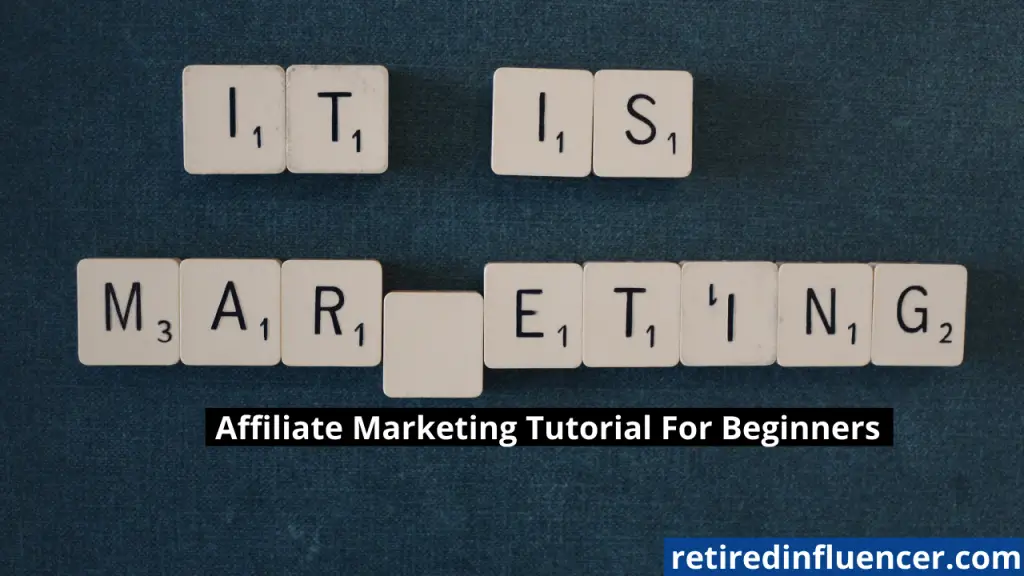Good, relevant, and high-quality content is the backbone of any successful affiliate marketing.
To create content that converts well for affiliate marketing, you want to first understand who your target audiences are and what they are really in need of and provide valuable, relevant content (information) addressing those needs.
Use compelling headlines to increase open rates.
Incorporate storytelling into your content to build trust and increase engagement.
Provide strong calls to action (Incorporate affiliate links into your post and showcase the benefits).
Optimize your content for SEO to drive organic traffic.
And use analytics tools to see what’s working and what isn’t and refine your approach based on performance data.
Table of Contents
What Is Content In Affiliate Marketing?
Content in affiliate marketing refers to any type of material or information that is created to attract and engage an audience with the goal of promoting affiliate products or services.
This content can be in the form of blog posts, videos, product reviews, tutorials, how-to guides, comparison articles, and social media posts.
Why create content for affiliate marketing?
The primary purpose of content is to provide valuable information to the audience while encouraging them to click on your affiliate links and make purchases, thus earning you commissions.
How To Create Content That Converts For Affiliate Marketing
1. Understand Your Audience
Why Knowing Your Audience Matters?
The first step to creating content that converts for affiliate marketing is understanding your ideal audience.
If you don’t know who you’re talking to, it’s hard to make content that interests or resonates with them.
Think about who will be reading your content. What are their needs or challenges they’re facing? What problems do they want to solve or need help with?
How to Research Your Audience?
There are many ways to learn about your audience.
You can start by looking at the comments on your blog, YouTube video, or social media.
What questions are people asking? What topics get the most reactions or engagement?
You can also use tools like Google Analytics to see what pages people visit the most on your site.
Another good idea is to create surveys. Ask your readers what they want to learn about. Find out what their biggest challenges are.
This will give you a lot of ideas for content that will help them.
I want you to remember this – the more you know about your audience, the better you can make content that meets their needs or resonates with them.
When your content helps people, they are more likely to trust you and click on your affiliate links or more importantly purchase what you recommend.
2. Choose the Right Affiliate Products
Criteria for Selecting Affiliate Products
Choosing the right affiliate products is crucial for your success. You need to promote products that your audience will love and find useful.
Here are some tips to help you pick the right products:
- Relevance: The products should be related to your niche. If you write about fitness, promote workout gear or health supplements.
- Quality: Only promote high-quality products. Your audience trusts you, so don’t recommend anything you wouldn’t use yourself.
- Demand: Choose products that people are searching for. You can use tools like Google Trends to see what’s popular.
- Commission Rate: Look for products that offer a good commission. This is the percentage of the sales you earn when someone buys through your link.
Tools and Resources for Finding Products
There are many tools and resources to help you find the best affiliate products. Here are some of the most popular ones:
- Affiliate Networks: Sites like Amazon Associates, ShareASale, and ClickBank list thousands of products you can promote.
- Product Research Tools: Tools like Ahrefs, SEMrush, and BuzzSumo can help you see what products are trending and what your competitors are promoting.
- Direct Partnerships: Sometimes, you can reach out directly to companies and ask if they have an affiliate program. This can be a great way to find unique products that aren’t widely promoted.
OVERVIEW!
By carefully choosing the right products, you can ensure that your audience finds value in what you’re promoting. This will increase your chances of making sales and earning commissions.
- PS. I wrote another article where I went into more detail on how to choose profitable affiliate programs. Check it out here.

3. Do Intensive Keyword Research And Integration
Keyword research is the foundation of SEO. It helps you find out what your audience is searching for and how to target those searches.
Here’s how to do it effectively:
- Use Keyword Tools: Tools like Google Keyword Planner, Ahrefs, and SEMrush can help you find popular keywords related to affiliate marketing.
- Focus on Long-Tail Keywords: These are longer phrases that are more specific. For example, instead of “affiliate marketing,” use “how to create content that converts for affiliate marketing.”
- Integrate Keywords Naturally: Include your main keyword in the title, headings, and throughout the content, but make sure it flows naturally and doesn’t feel forced.
4. Create High-Quality Content
Writing Compelling Copy
To create content that converts, you need to write compelling copy. This means your writing should grab your reader’s attention and keep them engaged.
Here are some tips to help you write better copy:
- Use Clear Headlines: Your headlines should be clear and tell the reader exactly what they will learn.
- Be Conversational: Write as if you are talking to a friend. Use simple words and short sentences.
- Focus on Benefits: Explain how the product will help your readers. Focus on the benefits, not just the features.
- Include a Call-to-Action (CTA): Tell your readers what you want them to do next, like “Click here to buy now” or “Learn more”.
Incorporating Visuals and Multimedia
Adding visuals and multimedia to your content can make it more engaging. People like to see images and videos that help explain what you are talking about.
Here are some ways to use visuals effectively:
- Images: Use high-quality images to show the product. You can also use infographics to explain complex information.
- Videos: Create videos that show how to use the product. Product reviews or tutorials can be very effective.
- Charts and Graphs: Use charts and graphs to show data or comparisons. This can make your content more trustworthy.
Storytelling Techniques
Storytelling can make your content more relatable and interesting. People love stories, so try to include them in your writing.
Here’s how you can do it:
- Share Personal Experiences: Talk about how you used the product and how it helped you.
- Customer Testimonials: Include stories from other people who have used the product and had success.
- Create Scenarios: Paint a picture of how the product can solve a problem. Describe a situation your readers might face and show how the product helps.
OVERVIEW!
By creating high-quality content with compelling copy, engaging visuals, and interesting stories, you can capture your audience’s attention and encourage them to take action.
5. Utilize On-Page SEO Techniques
On-page SEO refers to optimizing individual web pages to rank higher in search engines.
Here are some techniques to improve your on-page SEO:
- Title Tag: Make sure your title tag includes the main keyword and is compelling enough to attract clicks.
- Meta Description: Write a meta description that includes the keyword and provides a summary of the article. Keep it under 160 characters.
- Header Tags: Use H1 for the main title, and H2, H3, etc., for subheadings. This helps organize your content and makes it easier for search engines to understand.
- Alt Text for Images: Use descriptive alt text for images that include the main keyword. This helps with image search optimization.
- Internal Linking: Link to other relevant articles on your site. This helps keep readers on your site longer and improves your SEO.
Internal and External Linking Strategies
Linking is an important part of SEO. It helps search engines understand the content of your page and how it relates to other pages.
Here’s how to use internal and external links effectively:
- Internal Links: Link to other relevant content on your site. This can help readers find more information and keep them engaged.
- External Links: Link to authoritative sources that provide additional value to your readers. This adds credibility to your content and can improve your SEO.
- Anchor Text: Use descriptive anchor text for your links. Instead of “click here,” use something like “learn more about affiliate marketing strategies.”
OVERVIEW!
By following these SEO best practices, you can improve your chances of ranking higher in search engines, attracting more visitors, and increasing your affiliate sales.
6. Measure And Analyze Performance
Tools for Tracking Performance
To know if your content is converting or performing better, you need to track its performance.
Here are some tools that can help you measure your success:
- Google Analytics: This free tool helps you track traffic to your site, see where your visitors are coming from, and understand how they interact with your content.
- Google Search Console: This tool shows how your site is performing in Google search results. It can help you identify which keywords are driving traffic and how to improve your SEO.
- Affiliate Network Reports: Most affiliate networks provide detailed reports on your performance, including clicks, conversions, and earnings.
- Social Media Analytics: Platforms like Facebook, Twitter, and Instagram offer analytics tools to track engagement with your posts.
Key Metrics to Monitor
To measure the effectiveness of your content, keep an eye on these key metrics:
- Traffic: Monitor the number of visitors to your site. High traffic indicates that your content is attracting attention.
- Engagement: Look at metrics like time on the page, bounce rate, and comments to see how engaged your audience is with your content.
- Click-Through Rate (CTR): Track the number of clicks on your affiliate links. A high CTR means your content is compelling and encourages action.
- Conversion Rate: This is the percentage of visitors who take the desired action, such as making a purchase. A high conversion rate indicates that your content is effective at driving sales.
- Earnings: Keep track of your affiliate earnings. This will help you understand which products and content types are most profitable.
Adjusting Strategies Based on Data
Once you have data on your performance, use it to refine your strategies.
Here’s how to make data-driven adjustments:
- Identify Top-Performing Content: Look at which articles and types of content are driving the most traffic, engagement, and conversions. Create more content like this.
- Optimize Underperforming Content: Identify content that isn’t performing well. Consider updating it with new information, improving the SEO, or adding better visuals.
- Test Different Approaches: Experiment with different headlines, CTAs, and content formats to see what works best. A/B testing can help you find the most effective strategies.
- Focus on High-Converting Products: Promote more of the products that are generating the most sales. Consider dropping products that aren’t performing well.
- Stay Updated: The world of affiliate marketing is always changing. Keep learning and stay updated with the latest trends and techniques.
OVERVIEW!
By regularly measuring and analyzing your performance, you can continuously improve your content and strategies, leading to more conversions and higher earnings.
Content Formats That Convert For Affiliate Marketing
Blog Posts
Blog posts are a great way to share information and promote affiliate products. They are easy to create and can be very effective if done right.
Here are some tips for writing blog posts that convert:
- How-to Guides: Write detailed guides that teach your readers how to do something. For example, “How to Start a Fitness Routine with These Simple Steps.”
- List Posts: People love lists because they are easy to read. Write posts like “Top 10 Workout Gadgets for Home Use.”
- Case Studies: Share success stories that show how a product helped someone. This adds credibility and can convince readers to try the product.
Product Reviews
Product reviews are one of the most effective ways to promote affiliate products.
When people are thinking about buying something, they often look for reviews to help them decide.
Here’s how to write great product reviews:
- Be Honest: Give your honest opinion about the product. Mention both the pros and cons.
- Be Detailed: Include lots of details about the product. Talk about its features, how it works, and how it can be used.
- Include Personal Experience: Share your own experience with the product. This makes your review more authentic and trustworthy.
Tutorials and How-To Guides
Tutorials and how-to guides are very useful for readers. They show step-by-step how to do something and can be very effective for promoting affiliate products or services.
Here are some tips for creating tutorials:
- Be Clear and Simple: Break down the steps into simple, easy-to-follow instructions.
- Use Visuals: Include images, screenshots, or videos to help explain the steps.
- Include Tips and Tricks: Share extra tips that can help your readers get the most out of the product.
Comparison Articles
Comparison articles help readers choose between different products. They are especially useful when people are trying to decide between similar items.
Here’s how to write comparison articles:
- Choose Similar Products: Compare products that are similar in function or purpose.
- Highlight Key Differences: Point out the main differences between the products. This helps readers see which one is better for their needs.
- Include Pros and Cons: List the pros and cons of each product. This gives readers a balanced view and helps them make an informed decision.
OVERVIEW!
By using these content formats, you can create engaging and informative content that helps your readers and encourages them to make purchases through your affiliate links.
Best Ways To Promote Your Affiliate Content To Reach More Audiences
Social Media Marketing
Social media is a powerful tool for promoting your content.
Here are some tips to effectively use social media to drive traffic to your affiliate content:
- Choose the Right Platforms: Focus on the social media platforms where your ideal customers or target audience is most active. This could be Facebook, Instagram, Twitter, LinkedIn, or Pinterest.
- Share Regularly: Post your content regularly to keep your audience engaged. Use a mix of different types of posts, like links to your articles, images, and short videos.
- Use Hashtags: Include relevant hashtags to increase the visibility of your posts. Research popular hashtags in your niche and use them strategically.
- Engage with Your Audience: Respond to comments and messages. Engage with your followers by asking questions and encouraging them to share your content.
Email Marketing
Email marketing is another effective way to promote your affiliate content.
It allows you to reach your audience directly.
Here’s how to use email marketing effectively to promote your content:
- Build an Email List: First, you want to offer something valuable, like a free eBook or a discount, to encourage people to sign up for your email list.
- Send Regular Newsletters: Keep your subscribers informed with regular newsletters. Include links to your latest articles and affiliate products.
- Personalize Your Emails: Use your subscribers’ names and personalize the content based on their interests and behavior.
- Include Clear CTAs: Make sure your emails have clear calls to action. Encourage your readers to click on your affiliate links or visit your website.
Paid Advertising
Paid advertising can help you reach a larger audience quickly and generate affiliate sales in a short period.
Here are some tips for using paid ads to promote your affiliate content:
- Set a Budget: Determine how much you will spend on advertising. Start with a small budget and scale up as you see results.
- Choose the Right Platforms: Advertise on platforms where your audience spends the most time. Google Ads, Facebook Ads, and Instagram Ads are popular choices.
- Create Compelling Ads: Your ads should be eye-catching and include a clear message. Use high-quality images or videos and a strong call to action.
- Target Your Audience: Use targeting options to reach your specific audience. You can target based on demographics, interests, behaviors, and more.
- Monitor and Adjust: Keep track of your ad performance and make adjustments as needed. Test different ads to see what works best.
THAT’S IT FOLKS!
Affiliate marketing can be a great way to earn money online. But to be successful, you need to create content that converts.
This means you need to craft content that gets people to take action, like clicking on your affiliate links and making a purchase.
By understanding your audience, choosing the right products, creating high-quality content, using SEO best practices, promoting your content effectively, and measuring your performance, you can achieve great results in your affiliate marketing efforts.





